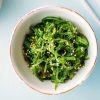- Empty cart.
- Continue Shopping
How to Choose the Right Types of Cheese for Protein

Cheese, a beloved dairy product, is not only rich in flavor but also a valuable source of protein. Incorporating the right types of cheese into your diet can be an excellent way to boost your protein intake.
Understanding Cheese and Protein
Cheese is a dairy product made from milk, which naturally contains protein. The protein content in cheese can vary widely depending on factors such as the type of milk used, the cheese-making process, and the aging period. Opting for cheeses that are higher in protein can be a smart choice for those looking to increase their protein intake.
Choosing High-Protein Cheeses
1. Parmesan
Parmesan cheese is a standout when it comes to protein content. It is renowned for its intense flavor and can be grated over dishes for an extra boost of protein. Keep in mind that a little goes a long way due to its robust taste.
2. Swiss
Swiss cheese is another excellent choice for protein. It is a versatile cheese that pairs well with a variety of dishes. Opt for the reduced-fat versions for a healthier option.
3. Cottage Cheese
Cottage cheese is a powerhouse of protein, making it a favorite among fitness enthusiasts. It can be eaten on its own or incorporated into salads, dips, and even desserts.
4. Mozzarella
Part-skim mozzarella is a relatively high-protein cheese that is widely used in various dishes. It melts beautifully, making it a great addition to pizzas, casseroles, and sandwiches.
5. Greek Feta
Greek feta cheese is a tangy, crumbly cheese that is not only delicious but also a good source of protein. It can be used in salads, pastas, and as a topping for various dishes.
6. Cheddar
Cheddar cheese, especially the sharp variety, contains a respectable amount of protein. It’s a versatile cheese that can be sliced for sandwiches, grated for toppings, or enjoyed on its own as a snack.
Considerations When Choosing Cheese for Protein
1. Fat Content
While protein is an important factor, it’s essential to consider the fat content of the cheese, especially if you are mindful of your overall dietary fat intake. Opt for reduced-fat or part-skim varieties when possible.
2. Sodium Content
Some cheeses can be high in sodium, which may not be suitable for individuals with certain dietary restrictions. Be sure to check the label for sodium content and choose lower-sodium options if needed.
3. Personal Preference and Dietary Needs
Ultimately, the right cheese for you will depend on your personal taste preferences and any dietary restrictions or preferences you may have. Experiment with different types to find the ones that best suit your needs and palate.
Conclusion: Elevate Your Protein Intake with Savvy Cheese Choices
Choosing the right types of cheese for protein is a simple yet effective way to increase your protein intake while enjoying delicious flavors. By considering factors like protein content, fat and sodium levels, and personal preferences, you can make informed choices that align with your dietary goals. With a variety of high-protein cheeses available, you have the opportunity to enhance your meals with both taste and nutrition.








